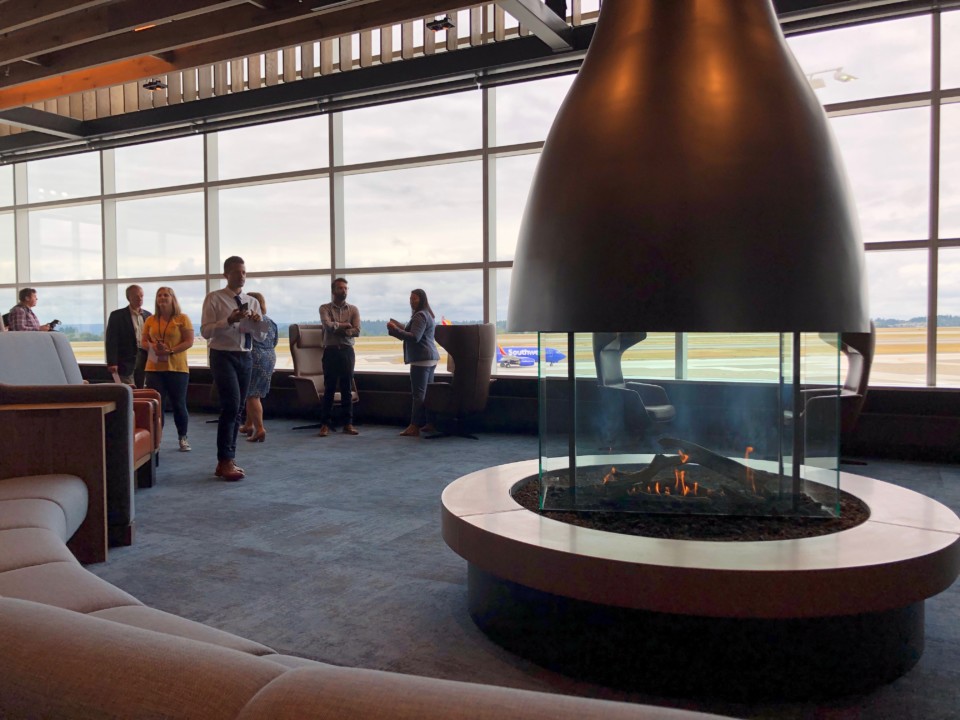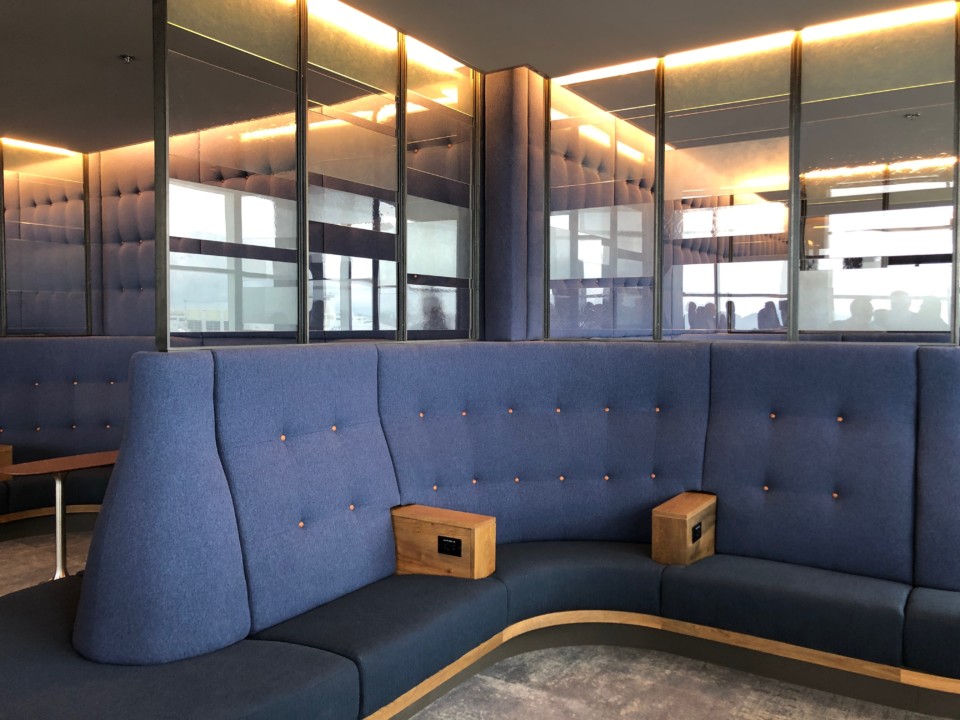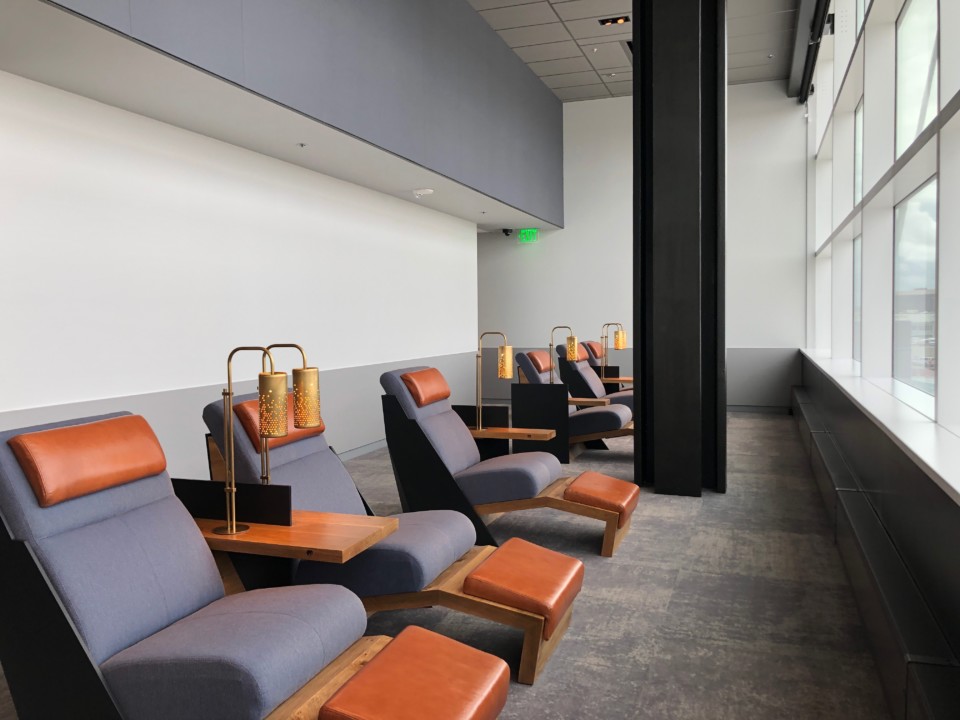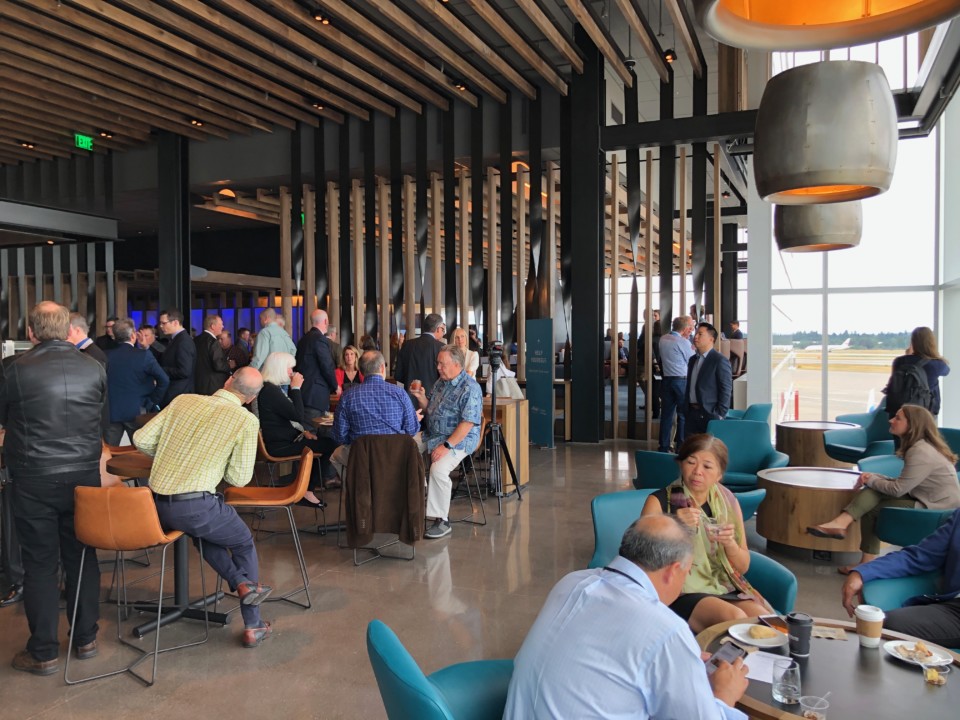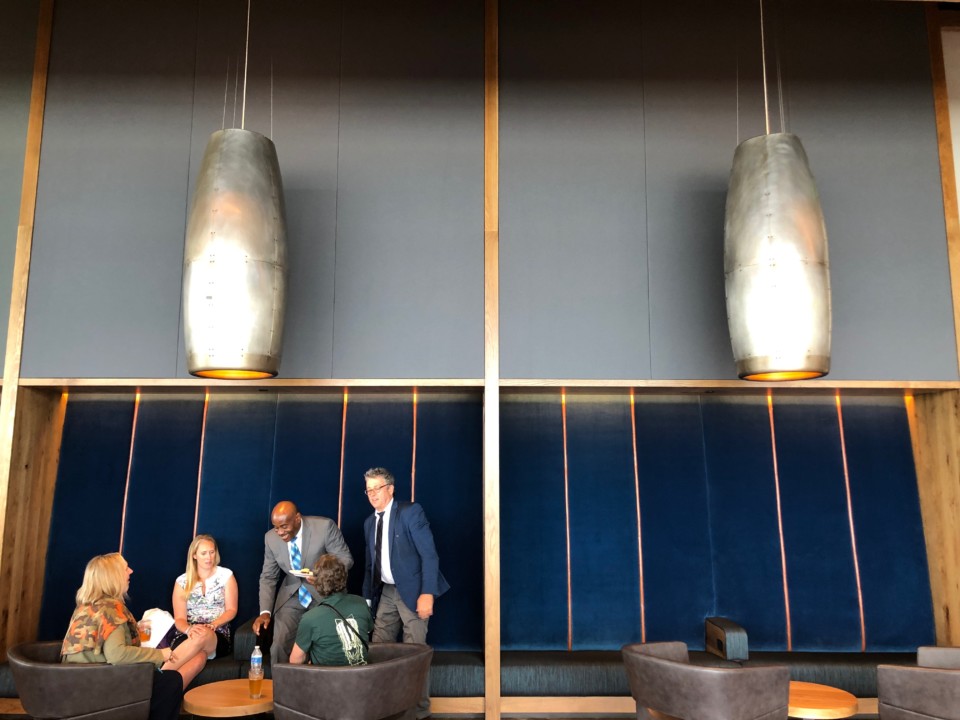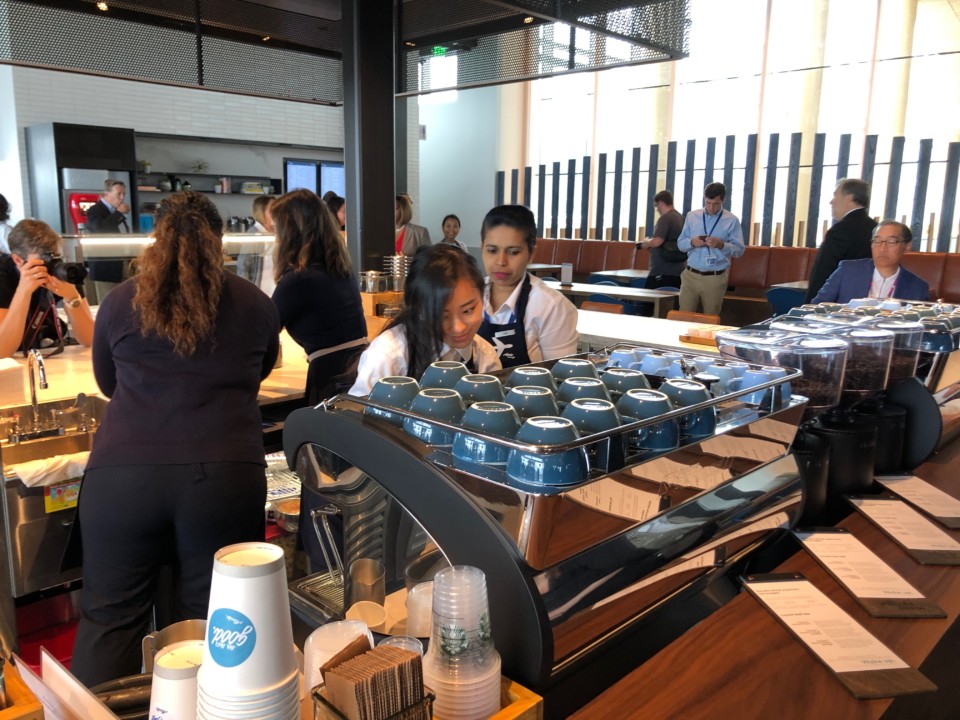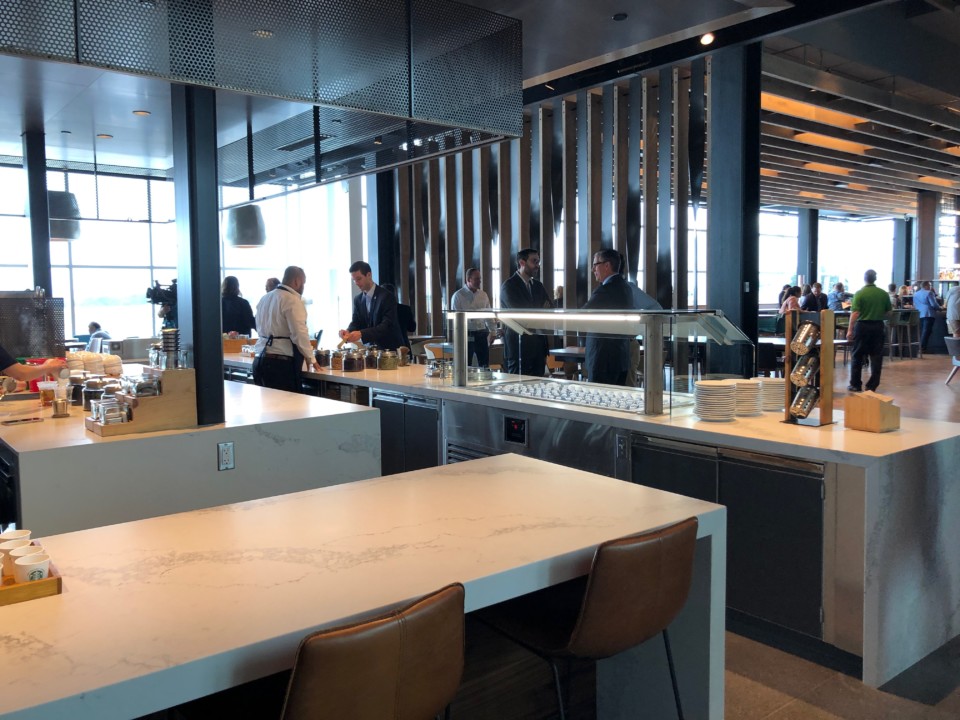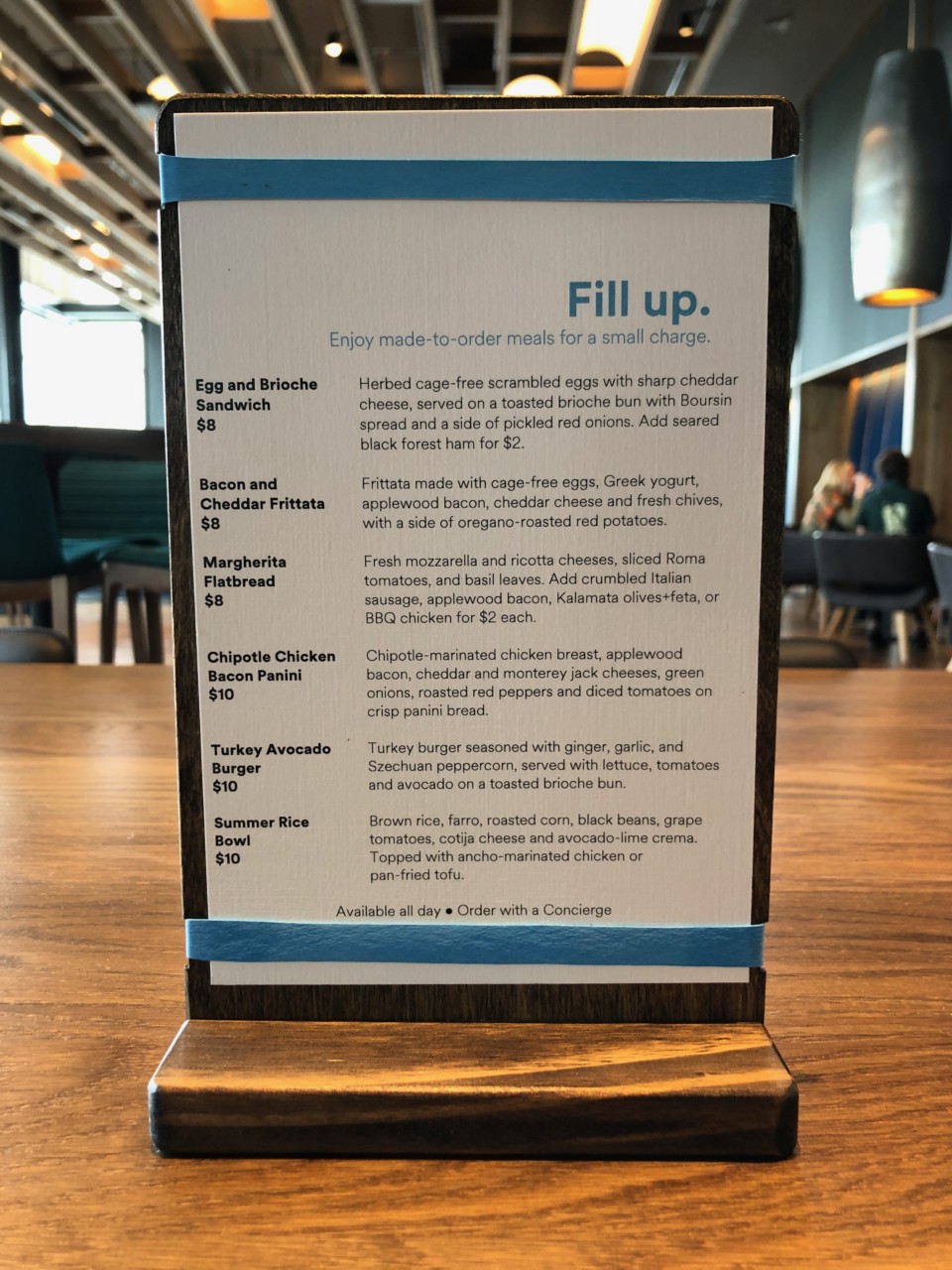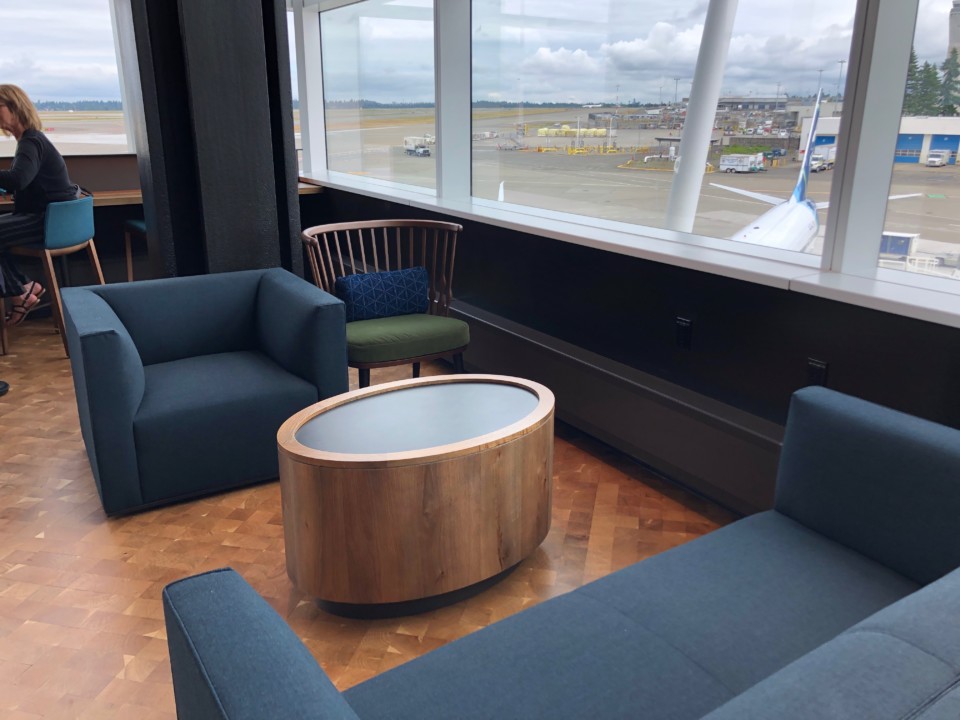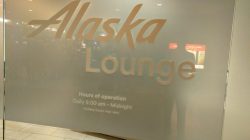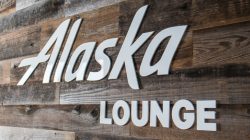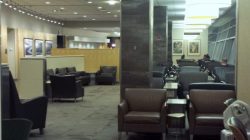As I walked into the newest Alaska Lounge in Seattle’s North Satellite, I couldn’t help but think, “This looks like an international business class lounge.”
It doesn’t hurt that the lounge’s main seating area is anchored by a large floating fireplace similar to the one at the Oneworld Business Class Lounge in Los Angeles. Or that it’s located on a separate floor, away from the hubbub of the main concourse. Even so, this is a dramatic step up for a carrier that serves largely domestic routes and which has been derided in the past for being old fashioned.
Alaska Airlines has definitely increased its investment in product and marketing since acquiring Virgin America. Everything from paper napkins to in-flight magazines are a little more clever and witty. The lounge enhancements are just more evidence that this is a trend worth noticing. Over $200 million has been spent on updating aircraft interiors and livery, including a new first class and main cabin experience. This revamped Alaska Lounge, which will be its flagship location, is yet another piece of a larger effort.
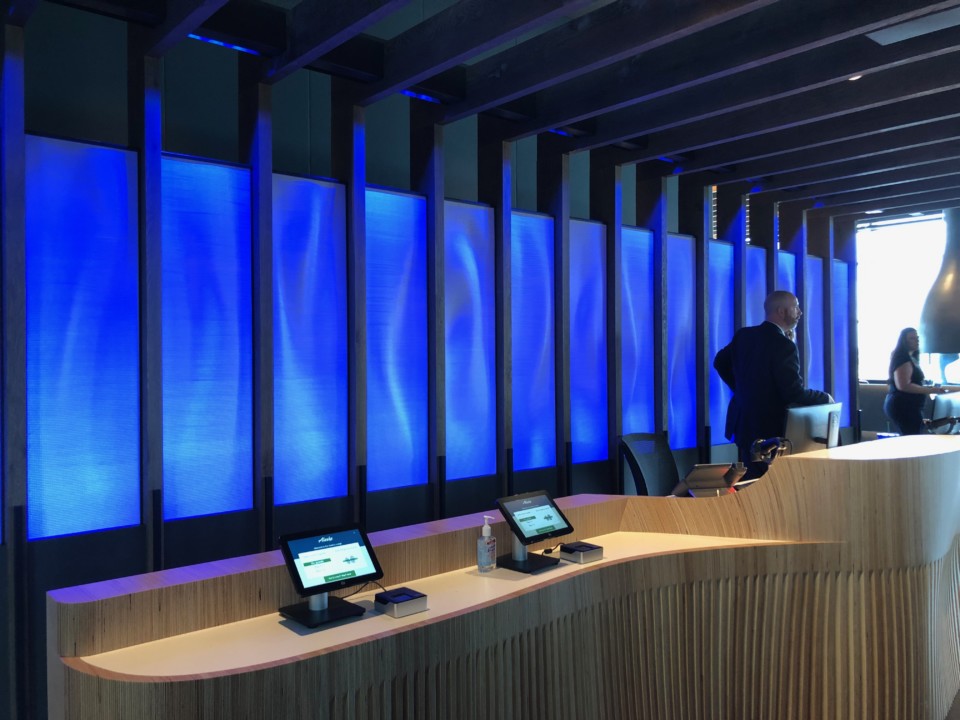
I have spent far more time in the North Satellite over the last decade than I care to admit. The renovation will expand it to 20 gates, but as of this month only 8 of those new gates have opened. The rest will come in 2021.
Already the terminal has changed dramatically, and what was once a sleepy “focus city” that United abandoned is now a major international gateway. Nearly 50 million passengers travel through Seattle-Tacoma International Airport each year, and half of them are served by Alaska Airlines. The carrier has overtaken the entire North Satellite, Concourse C, and most of Concourse D.
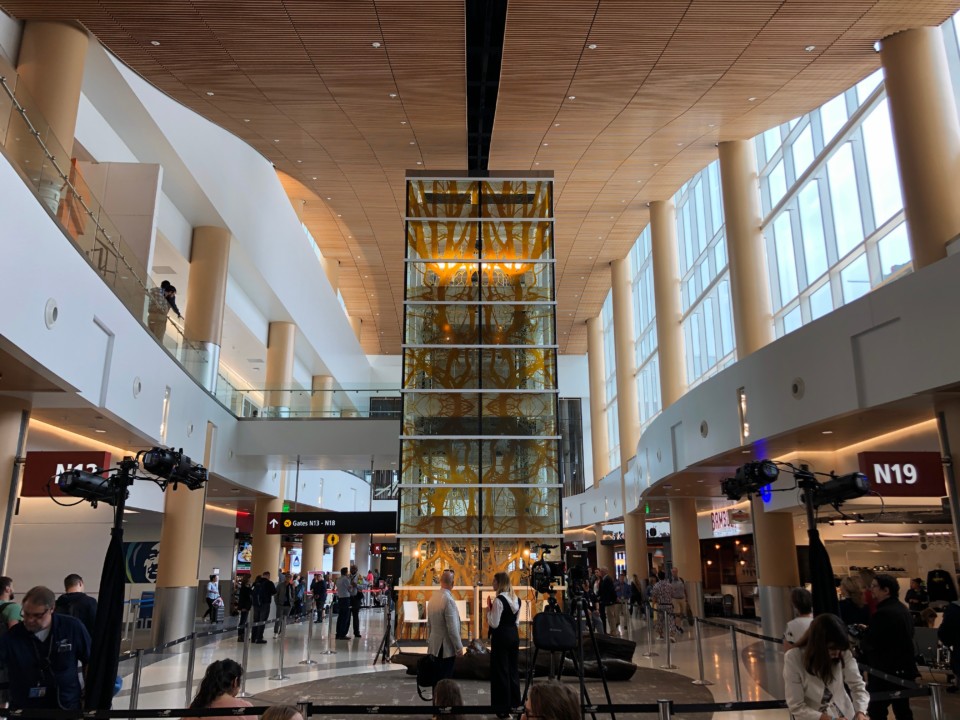
This lounge replaces a small temporary location in the North Satellite and is three times larger than any other Alaska Lounge in the system. Additional lounges are located in Concourse C and Concourse D in Seattle. Locations in Los Angeles, Portland, and Anchorage have been recently renovated or will be finished soon. San Francisco is under construction in Terminal 2, and a New York-JFK lounge opened in the last year.
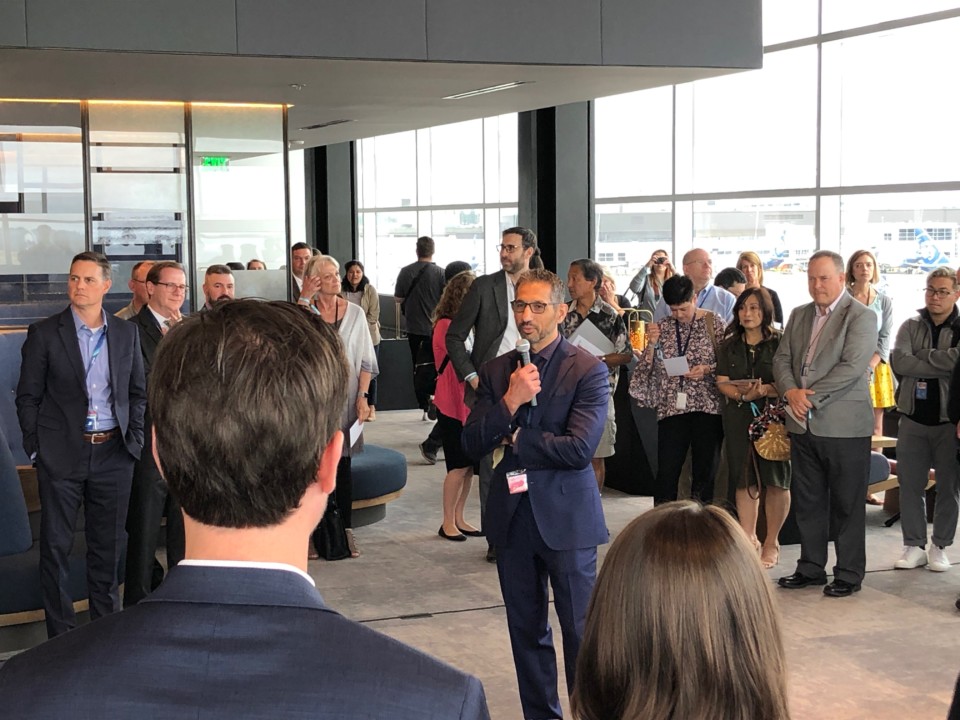
The new North Satellite lounge is most similar to the JFK location, with dark but warm colors and a mix of steel, leather, and wood construction. There are three zones to relax in throughout the lounge:
- Take a Breath, offering multiple areas to sit down and put up your feet while enjoying views of the runway, Mount Rainier, and the Olympic Mountains.
- Help Yourself, with both self-serve beverages and a full-service barista station to go with freshly baked goods.
- Cut Loose, providing a large full-service bar, custom cocktails, and a variety of local beers on tap. Remember, no tips allowed at Alaska Airlines!
In my conversations with Graham Baba Architects as well as Alex Judson, Manager of Alliances and Lounges, I learned that we should expect the JFK and North Satellite Lounges to serve as a template going forward. Details of Alaska’s original “Board Room” design, including conference rooms, lodge-style architecture, and Dale Chihuly glass art are slowly being phased out.
You may remember a lot of excitement over the Concourse C lounge opening a few years ago. That lounge (as well as the temporary North Satellite lounge) has a much brighter color scheme including green chairs with a similar hue as the accent color on the new Alaska Airlines livery. You don’t see that brightness in the JFK and North Satellite locations, but you’ll continue to see greater consistency between locations. New furniture is already on order for Concourse C, and discussions on renovating the original two-story Alaska Lounge near Concourse D are ongoing.
However, these changes don’t mean there is a loss of local character.
The architects mentioned their reliance on local designers, metalworkers, and woodworkers. The North Satellite design suggests an aeronautical influence with jet engines repurposed as pendant lamps and steel slats that curve slightly just like propellers. It’s so subtle I almost didn’t notice it, but perhaps that’s better than hitting me over the head.
You can also see the local influence in the dining options. Having long relied on local suppliers inflight, Alaska Airlines now has a partnership with Seattle’s Fremont Brewing Co. and an exclusive Lounge Life IPA on tap in the Alaska Lounge. The amazing pancake machines and Starbucks coffee machines are still there (which make one of the better airport lattes) but there will also be a live barista station with specialty coffee beverages and teas. The bakery case was well stocked with delicious scones and cookies from Seattle’s Marsee Bakery.
Perhaps one of the best features is a dining menu with breakfast and lunch/dinner entrees available all day for between $8 and $10. The menu is both interesting and filling, and it’s a steal compared to what you might be charged at most airport restaurants. You also don’t have to leave the lounge, which is important because most airline lounges (not just Alaska’s) have rules against bringing in outside food. All Alaska Lounges still have their usual array of free soups, salad, and a make-your-own trail mix bar.
On the topic of price, what does it cost to get into the Alaska Lounge? Many readers have probably relied in the past on a Priority Pass card, which grants free access. But that has become more and more difficult as the Alaska Lounges have neared capacity and posted signs that temporarily close them to Priority Pass members. The three lounges in Seattle no longer allow any Priority Pass members, ever. With the sheer size of the new space, I don’t think capacity is going to be an issue, but Alaska clearly doesn’t seem to be as reliant on the Priority Pass relationship as it once was.
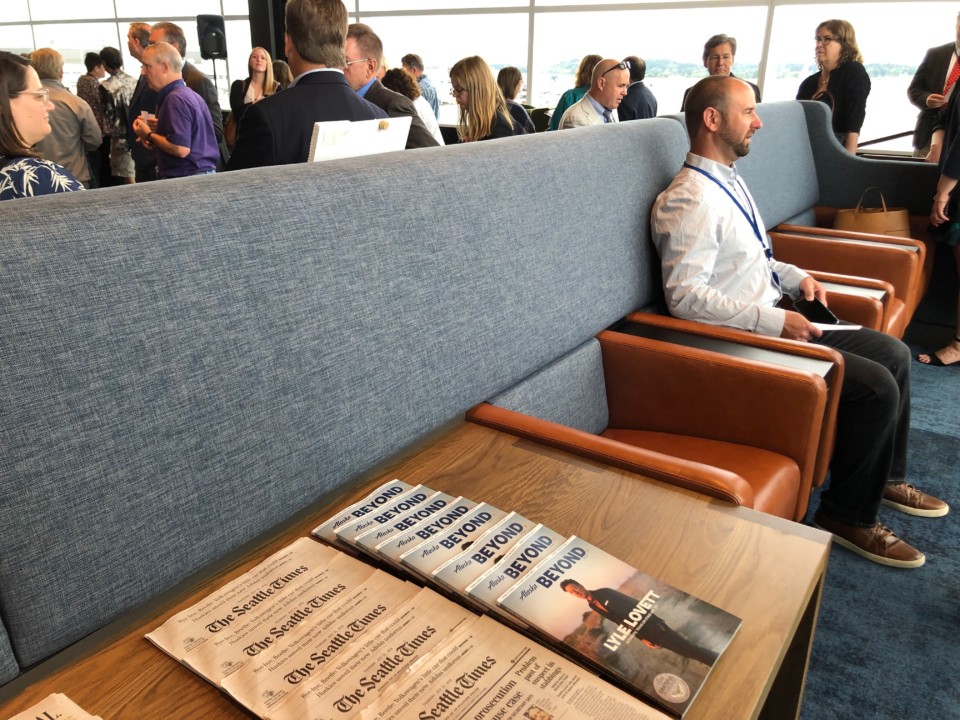
You can still get in for free when you purchase a first class ticket, either with cash or miles. This is a generous, longstanding policy and is better than you’ll find on most carriers when flying domestic. If you’re in coach, day passes are just $25 when you pay with your Alaska Airlines credit card (or $50 with another payment card) and are good for 24 hours at multiple locations. You don’t need to be flying on Alaska Airlines to take advantage.
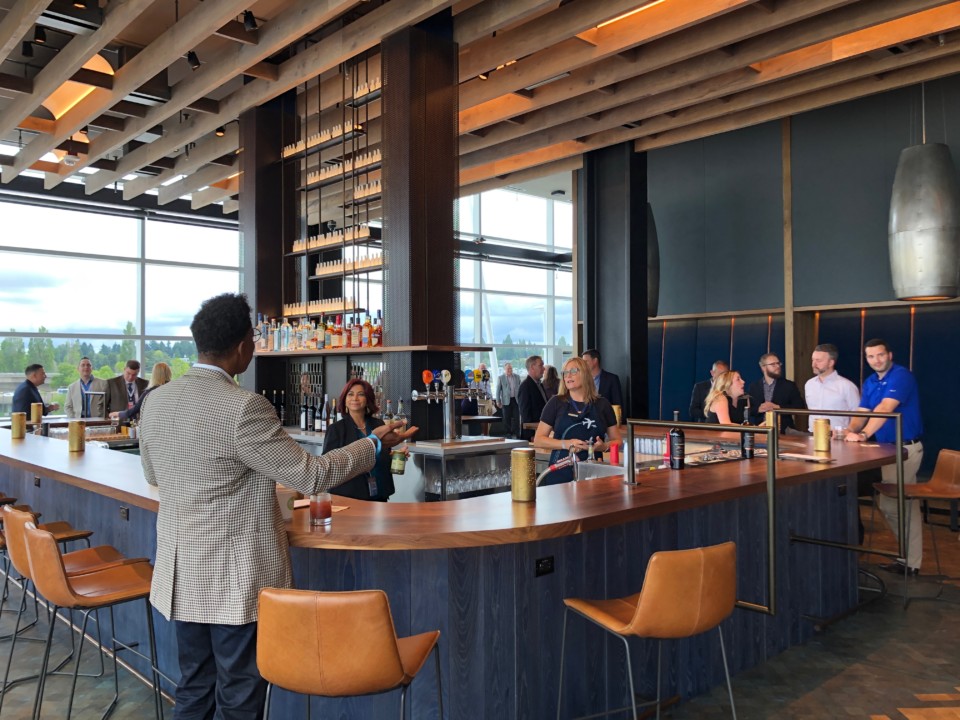
Finally, you can choose to purchase an annual membership, which starts at $450 but is discounted as low as $295 if you have MVP Gold or MVP Gold 75K elite status. Members can bring in up to two guests as well as family members. Even though there are only a handful of Alaska Lounge locations, membership comes with access to a large number of partner lounges in other destinations served by Alaska Airlines, so you shouldn’t feel too limited.
I’m excited to see such dramatic improvements in the quality of service offered by Alaska Airlines. As I said in my introduction, buying Virgin America was a bit of a gamble, going “all in” on a decision to grow the company vs. the real risk that Alaska might fade into obsolescence and be bought by someone else. So far that gamble seems to be working. New cabins, new lounges, and (so far) a continuation of the same Mileage Plan benefits I’ve grown to love with a few real enhancements along the way.
The new Alaska Lounge in Sea-Tac’s North Satellite is a great example of bringing luxury to the masses. I can’t wait to see the rest of the terminal once the renovations are complete, and I hope you all get a chance to enjoy it in the near future. Think of me and Travel Codex when you enjoy that Lounge Life IPA. Cheers!

